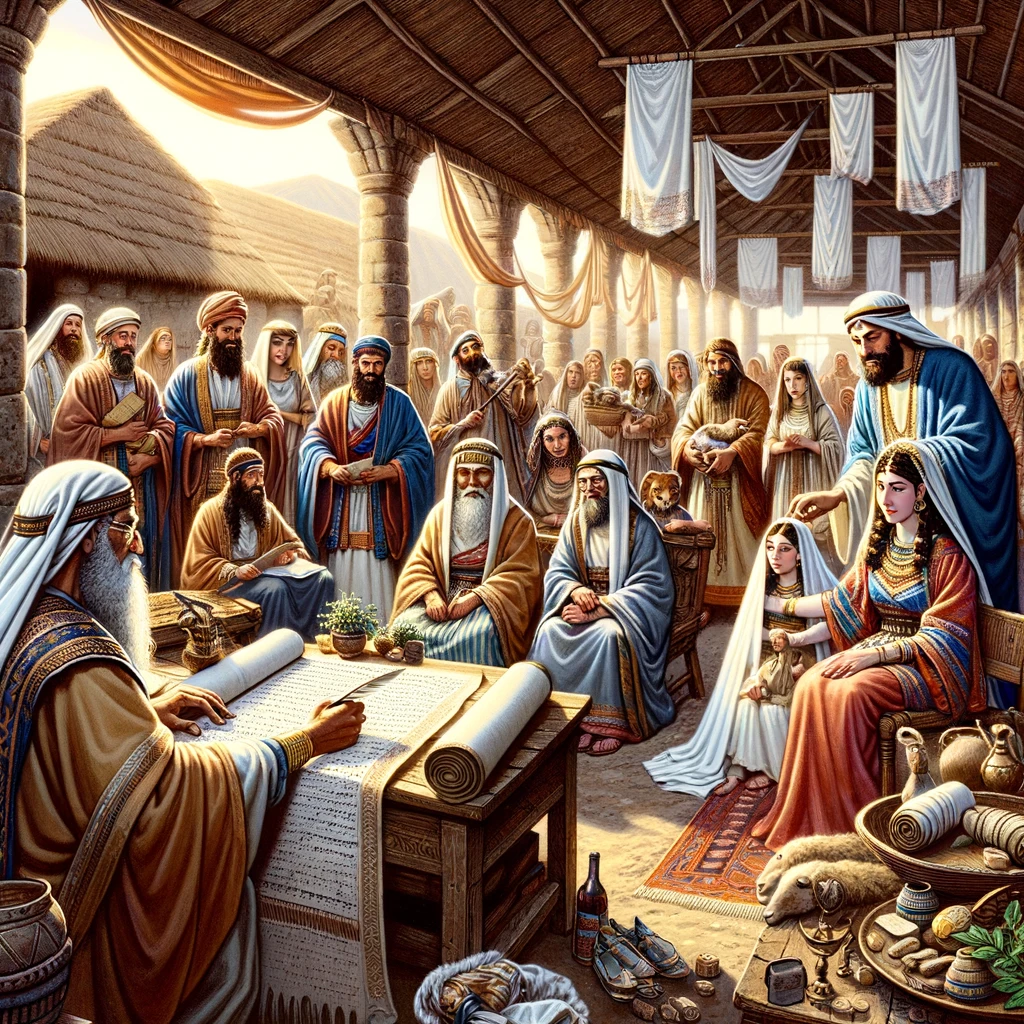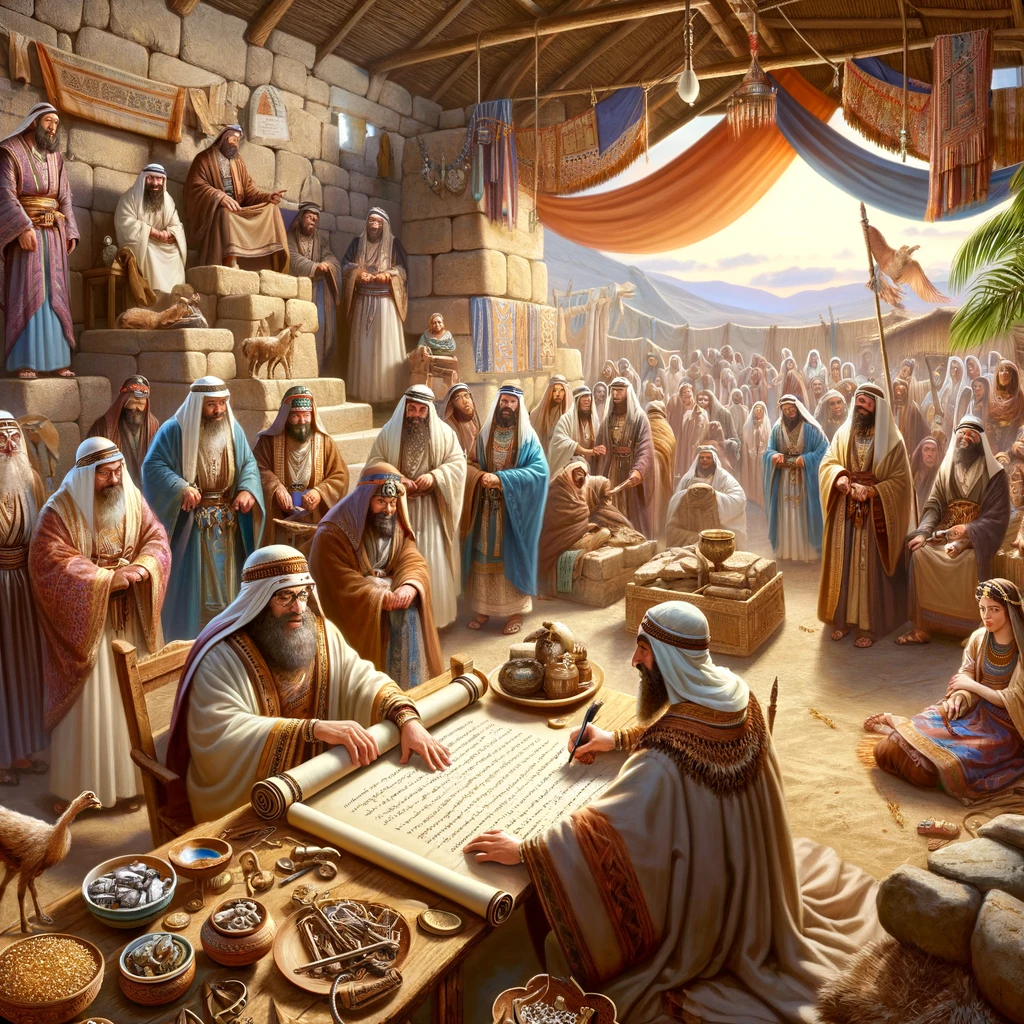Introduction
Marriage, a union celebrated across the globe, has been underpinned by various traditions and legal frameworks throughout history. Among these, marriage contracts and dowries stand out for their widespread influence on societal norms and family dynamics.
Originating in ancient times, these practices have played pivotal roles in defining the economic, social, and legal aspects of marital alliances. By exploring the historical context, purposes, and implications of marriage contracts and dowries, we gain insight into their profound impact on societies past and present.

The Essence of Marriage Contracts in the Old Testament: A Deeper Dive
The concept of marriage contracts in the Old Testament, known as “ketubah” in Hebrew, is a testament to the ancient world’s sophisticated understanding of matrimonial bonds. These contracts were not mere formalities but foundational elements that defined the social, legal, and moral contours of marriage. This deeper exploration into the essence of Old Testament marriage contracts reveals their significance, complexity, and the values they espoused, reflecting a nuanced approach to matrimonial alliances.
Legal Framework and Social Fabric
In the Old Testament context, marriage contracts served as the legal backbone of matrimonial alliances, establishing clear rights and duties for both parties, especially focusing on the husband’s obligations to his wife.
This legal framework was revolutionary in its recognition and protection of women’s rights within the marriage, a concept that was far from universal in the ancient world. By stipulating provisions for maintenance, protection, and respect, these contracts underscored the value of women in society, challenging prevailing patriarchal norms.
The social aspect of these contracts was equally significant. They were not private agreements but public declarations, involving families and communities in their formulation and execution. This communal involvement served to strengthen social bonds and ensured that the obligations were publicly acknowledged and more likely to be fulfilled. The marriage contract thus functioned as a social covenant, weaving individual unions into the broader fabric of society.
Religious and Ethical Dimensions
Beyond their legal and social implications, marriage contracts in the Old Testament were imbued with profound religious and ethical significance. Marriage was perceived not merely as a civil agreement but as a sacred covenant, mirroring the covenantal relationship between God and His people. This sacralization of marriage elevated the ethical standards expected within the matrimonial bond, emphasizing mutual respect, fidelity, and care.
The ethical dimension of these contracts is further highlighted in the provisions that safeguard the welfare of the wife. By mandating the husband’s responsibility for his wife’s well-being, the contracts encapsulated a vision of marriage as a partnership based on equity and compassion. This ethical framework reflected a broader moral vision of society, where the vulnerable were protected, and relationships were grounded in principles of justice and kindness.
Economic Considerations and Protections
The ketubah also addressed the economic aspects of marriage, ensuring that the wife would be provided for in case of her husband’s death or divorce. This provision not only offered financial security to the wife but also served as a deterrent against frivolous divorce, underscoring the seriousness with which marriage was regarded.
The economic clauses of the marriage contract reflect an understanding of marriage as an institution that transcends the individual, bearing implications for the wider family and community’s economic stability.
Dowries: A Symbol of Economic and Social Stability in the Old Testament Context
In the ancient world of the Old Testament, dowries were not just customary gifts or financial transactions accompanying marriage; they were deeply symbolic and played a crucial role in ensuring economic and social stability. This exploration into the significance of dowries reveals the multifaceted layers of meaning they held and the essential functions they served within the societal fabric of the time.

Economic Security and Provision
At the heart of the dowry system was the provision of economic security for the bride. The dowry, consisting of money, property, or valuable goods, was a tangible expression of the bride’s family’s commitment to her well-being.
It ensured that she would have a measure of financial independence and security within her new household. In a society where women’s opportunities for economic self-sufficiency were limited, the dowry represented a significant form of financial protection and empowerment.
Moreover, the dowry served as a safeguard for the wife in the event of her husband’s death or divorce, acting as a financial safety net that guaranteed her a standard of living and prevented her from falling into destitution. This aspect of the dowry system underscores the ancient society’s recognition of the economic vulnerabilities faced by women and their efforts to mitigate these risks through marital agreements.
Social Significance and Family Alliances
Beyond its economic implications, the dowry was laden with social significance. It was a symbol of the bride’s family’s status and wealth, and the size and value of the dowry often reflected the family’s position within the social hierarchy.
By offering a substantial dowry, a family could secure a desirable match for their daughter, forging alliances with other families of equal or higher social standing. These alliances were not merely social contracts but strategic partnerships that could enhance the families’ collective social capital, influence, and security.
The dowry also served as a gesture of goodwill and commitment from the bride’s family, symbolizing their support for the marriage and their intention to maintain a positive relationship with the groom’s family. This aspect of the dowry system highlights the role of marriage in ancient societies as a means of cementing social bonds and fostering community cohesion.
Legal Implications and Women’s Rights
The legal framework surrounding dowries in the Old Testament also reflects the society’s efforts to protect women’s rights and ensure fair treatment within marriage. Laws and customs governing dowries sought to prevent the exploitation of the bride and her family, stipulating that the dowry should remain the wife’s property, albeit managed by her husband.
These legal protections ensured that the dowry could not be squandered or appropriated by the husband without consideration for the wife’s welfare, thereby safeguarding her economic interests.
Conclusion
The practice of providing dowries in the Old Testament era was a complex institution that served multiple functions: it provided economic security for the bride, symbolized social alliances and status, and embodied the societal commitment to protecting women’s rights within marriage. As a symbol of economic and social stability, the dowry system reflects the ancient society’s nuanced understanding of marriage as an institution that transcended the personal to encompass broader familial, economic, and social dimensions.